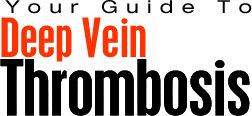There are many ways to approach weight loss but one of the most popular options these days is to invest in an ebook, an online course or a set of DVDs.
These programs are widely available online and through TV ads and they promise to make weight loss easy by giving us all the information we need laid out in front of us and removing any and all guess work.
But do these diet plans really work? Are they good value? And what can you do to get the most from them?
The Cynical View
One thing to consider is that diet plans can often be over-priced and poorly thought out.
This is not to say that they are ineffective or that the authors don’t know what they are talking about. Often though, the plans are designed in such a way that they will be very difficult to stick to and that most people won’t be able to keep them up for long.
These can often include elaborate eating plans that involve lots of preparation and cost a lot of money, or they might involve lengthy workouts.
Either way, this is not a concern for the author – as from their point of view they will still have sold a product that worked and the only problem was with your inability to stick with it.
Then there is the price.
A training program that costs several hundred dollars might be worth it in terms of the results, but there is no getting around the fact that most of the information is probably available online for much less.
This makes the product poor value at best and certainly not a good way to spend your cash.
The Promising Aspect
That said, this is of course not true for every training program. Some programs will be written with longevity in mind by people who really care.
And some will be available for much less, or will include lots of extras – perhaps personalization.
Personalization is important in fact, because everyone is different and different training programs work better for different people.
With all that in mind, you should have a better idea of what to look for and hopefully you can decide for yourself what would be good value for such a program.
More Advice
Perhaps the most important tip of all though, is that you mustn’t wait for your training program or treat it as gospel. Too often, people will read training programs and buy training programs almost as a form of procrastination.
This is like an unspoken agreement between the seller and the buyer.
While advice can make a big difference and help you to train faster, the reality is that losing weight should not be complicated and essentially amounts to eating less and exercising more.
You can start doing this immediately – there is no need to wait for a training program or diet plan. Don’t use it as an excuse!
Diet and Nutrition Tips for Optimal Eye Health
Mothers have, over the years, routinely told their young children to eat their carrots for healthy eyesight. That is still excellent advice today. Carrots are rich in Vitamin A—beta carotene—which is one of the primary nutrients for optimal eye health. This crunchy orange veggie has a high level of Vitamin C as well. Both of these vitamins have been shown in studies to reduce eye pressure—and that can help reduce the risk of glaucoma. Beta carotene is also associated with a lower risk of developing macular degeneration.
But carrots aren t the only foods that offer eye protection. There are many other foods that can be just as beneficial to developing strong eyes and keeping them in great shape throughout your life. As with any other food-related goal, balance and moderation are the keys. Here are a few foods and nutrients that should be eaten regularly for optimal eye health.
Since Vitamin C is a powerful nutrient for good eye health, many people turn to the most obvious sources of it: citrus fruits. Orange, tangerines, and grapefruit provide an abundant supply of Vitamin C. Yellow vegetables like squash and yellow bell peppers are rich with it, too, as are softer tasting foods such as sweet potatoes and pumpkins. Why take a vitamin supplement when all these delicious natural sources of Vitamin C are available?
Leafy green vegetables like spinach or kale contain Lutein as well as Vitamin E. Many studies have shown that these two nutrients can help delay the development of eye cataracts. They also perform the same duty that sunscreen does, protecting the eyes from UV rays. Turnip greens, romaine lettuce, and broccoli are other good sources of these two nutrients.
But there s more to life than vegetables. Add some nuts to your diet to increase your intake of Vitamin E. Hazelnuts and almonds are loaded with this vitamin. A small handful a day can keep your eyes in great shape, and it will promote a healthier heart, too.
Tomatoes are good for the eyes, too. Not only do they contain the super Vitamin C, but also Lycopene. The Lycopene levels increase once the tomatoes have been cooked and turned into ketchup or tomato sauce. An antioxidant, Lycopene helps reduce the levels of free radicals in the blood. This benefits the body in many ways, and the eyes are included.
The eyes also benefit from garlic. Not only does it help lower blood pressure and cholesterol levels, but it can help prevent cataract development and promote proper lens focusing. That s because it contains sulphur and guercetin. One clove of garlic per day can provide a lot of protection for the eyes.
Eggs are another excellent source of Lutein and Vitamin A. In fact, eggs provide the best source of Lutein and Zeaxanthin. Some studies show that eating one egg per day—scrambled, poached, boiled, or fried—can reduce a person s risk of developing macular degeneration to almost nothing. Those same nutrients also help reduce the risk of cataracts.
A fish that is particularly good for the eyes is salmon. These cold-water fish are known to provide omega-3 fatty acids that protect the heart, but they also provide Vitamin A, folic acid and other great nutrients that are good for the eyes, as well.
What about herbs and spices? They not only jazz up the taste of foods, but they can bring benefits to every part of the body. For example, the herb bilberry contains antioxidants that promote improved blood flow through capillaries in the eyes and allow the eyes to adjust to changes in light. Cinnamon is a popular spice that is also rich in antioxidants. Many others spices contain antioxidants—ginger, thyme, rosemary, to name just a few. Include them when cooking to increase both flavor and eye protection.
But there is more to protecting and nourishing the eyes than simply listing what foods you should eat. There are definitely some diet no-no s for those who want to keep their eyes healthy. Some of these include any kind of red meat. While red meat contains zinc—very good for the eyes—it contains a lot of things that can lead to eye ailments. Too much red meat can increase the possibility of early development of age-related macular degeneration.
This disease is the leading cause of vision loss in people who are 50 years old or older. So, while red meat has its place in the diet, many studies have shown that intake should be limited to four times a week or less. Eat a variety of the foods presented here, and your eyes should grow healthy and stay that way.
Diet Plan is Easy To Create With a Menu Planner
The very mention of a diet plan can make people give you a wry smile or maybe let out a sigh of exasperation meaning to say, been there, done that”. Well, things aren’t all that bleak. Some help from a menu planner can provide you with a different perspective altogether and give you a surge of confidence while you take efforts to stay in shape by eating healthy.
Healthy eating does not mean being stringent about what to eat and what not to, by depriving yourself of your favorites. It is about having the right food at the right time in portions of the right size to make you feel great, stay energetic and remain healthy. A diet plan doesn’t just monitor what you eat but makes sure that you eat smartly. Here are some points that will give you a clear idea of how to go about your diet plan and accomplish your mission with the help of a menu planner.
Set yourself an attainable target
When you set yourself a goal that is likely to be reached in a short time, say 3 months, the chances of you working towards it are high. Have realistic expectations and don’t expect a miracle without putting in efforts to watch what you are eating. Remember that crash diets and binge eating are a strict no-no.
Calculate your calorie requirement
Each person has different calorie requirements based on their age, lifestyle, activity level and other factors. Finding out how many calories you should consume to maintain, reduce or increase your weight is a prerequisite to draft the ideal diet plan.
Plan your intake based on your lifestyle
Calorie consciousness, healthy eating and sufficient physical activity need to go hand in hand. The kind of lifestyle you lead, your level of activity and your work routine are the criteria that you need to consider while planning your intake.
Flexibility is the key to sustain
For a diet to be effective, it should be simple and incorporate a certain degree of flexibility. Even well-structured plans can’t always be followed to the letter. There are sure to be occasions when you just can’t resist an extra helping or don’t feel all that hungry. Swapping plans now and then is acceptable.
Prioritize on nutrition
Plan for a variety of healthy and delicious recipes which have plenty of whole grains and the right amount of fresh fruit and low-fat dairy products that provide all the nutrition you need while you are on a diet. Prepare a list of quick and healthy alternatives that you can have on days when you just can’t adhere to your plan.
Menu planner is a tool that will help you keep your diet plan on track. Its clearly formulated menus take care of your dietary requirements and save your time, money and effort. Menu plans can be conveniently repeated once you have used up all your menus. After getting started with your menu planning, you will see how beneficial it is in helping you stick to your diet.
P.S.
Discover more from Personal Blog of Richard Tong
Subscribe to get the latest posts sent to your email.





